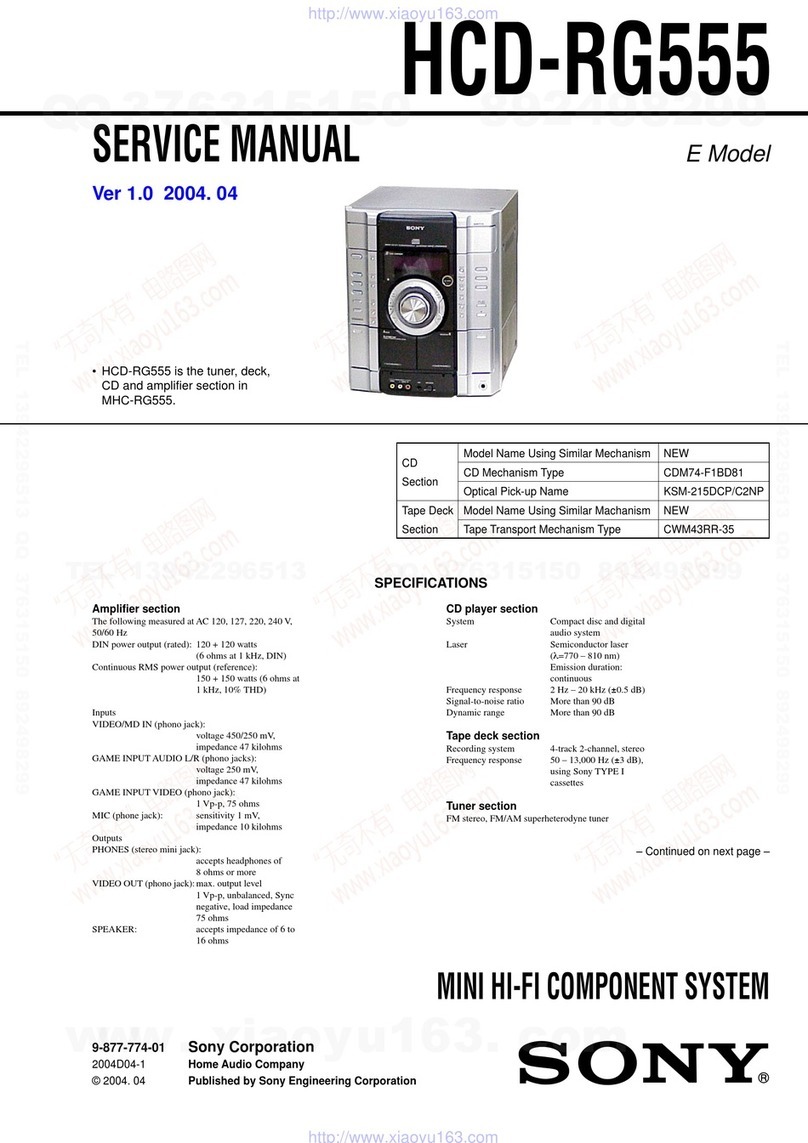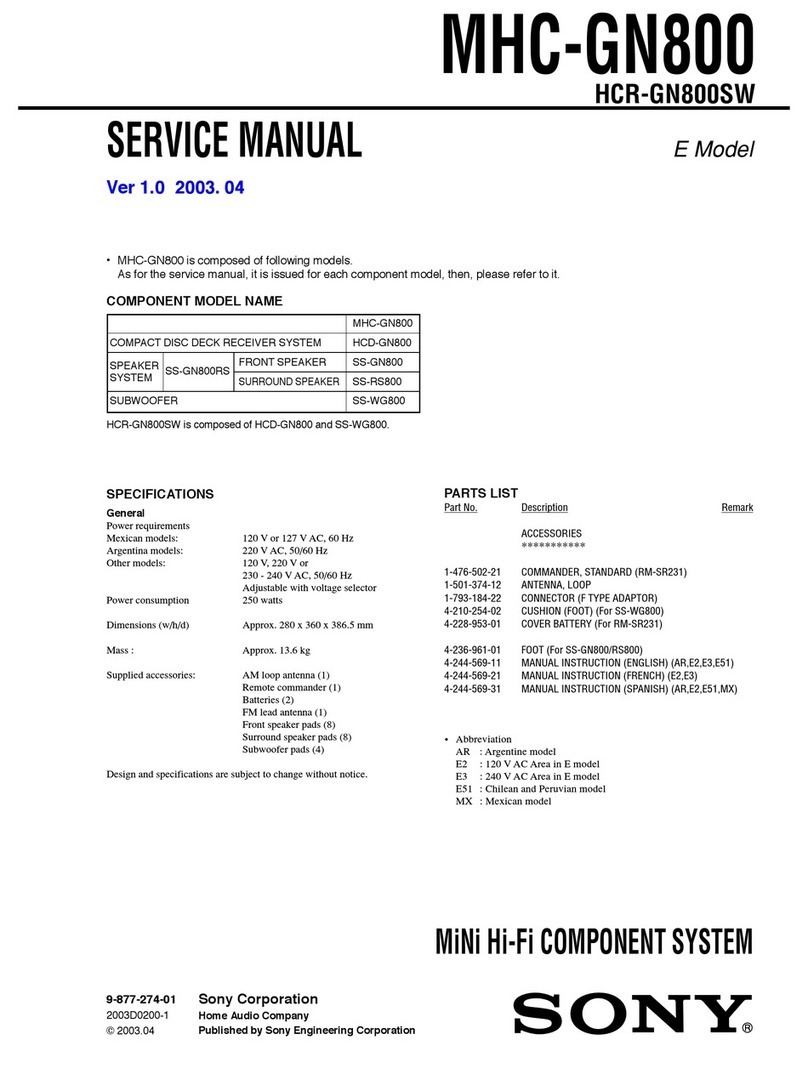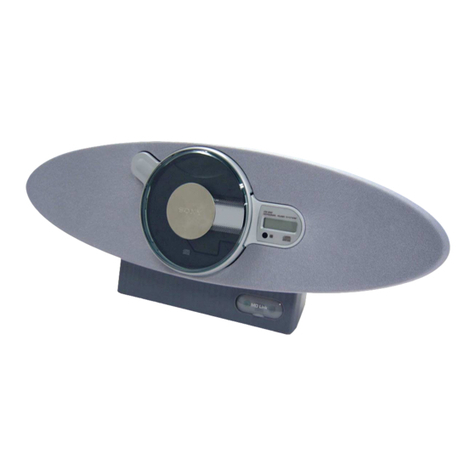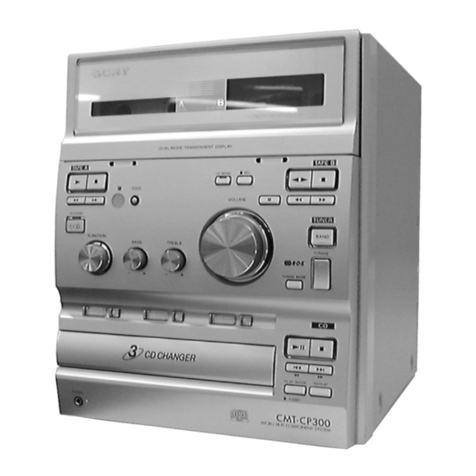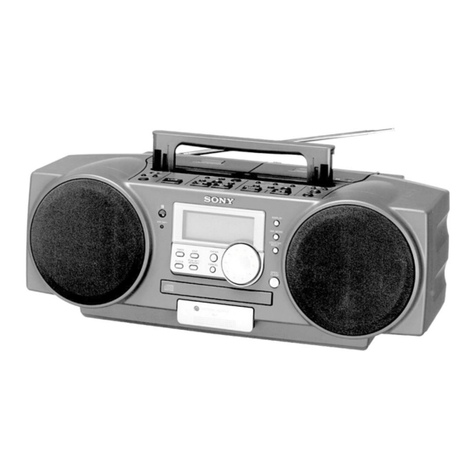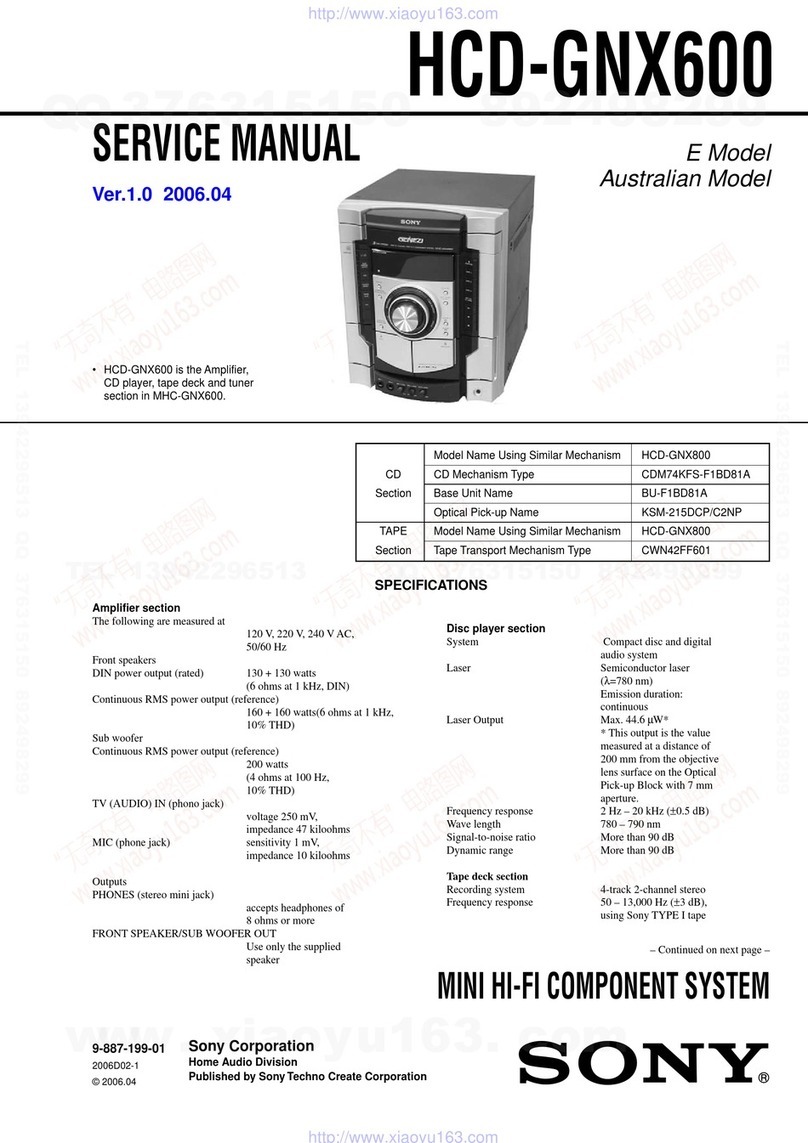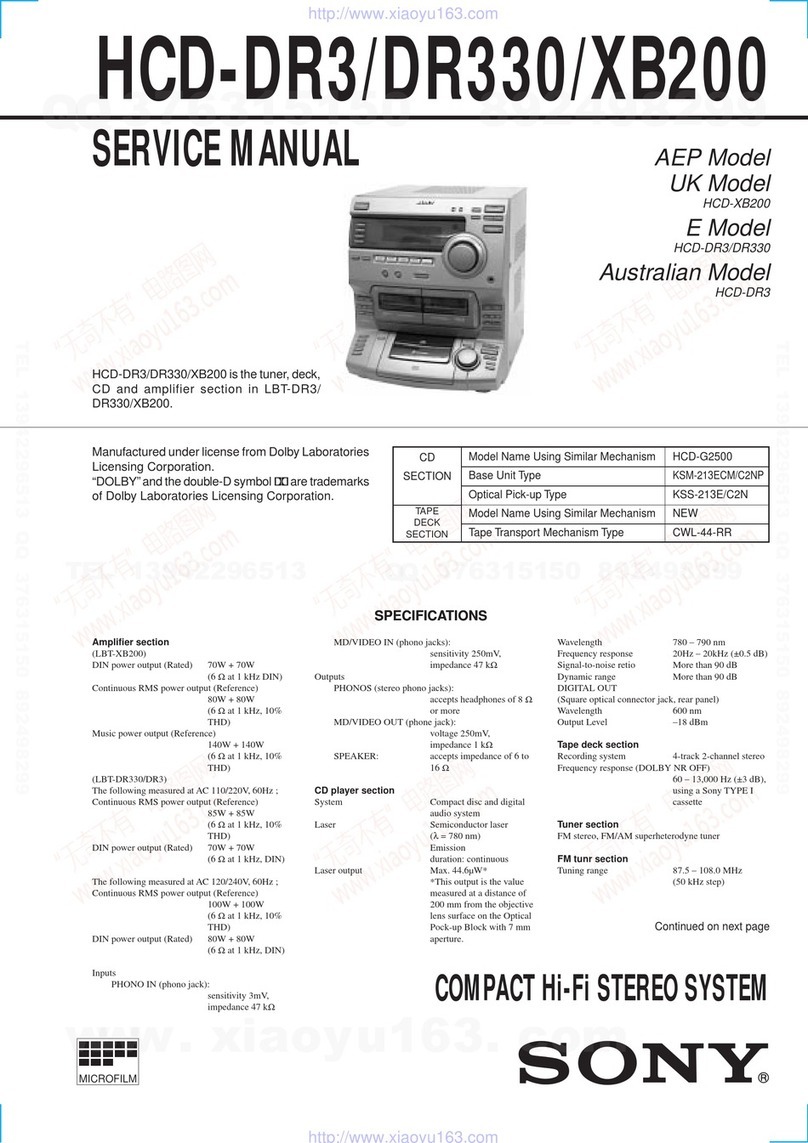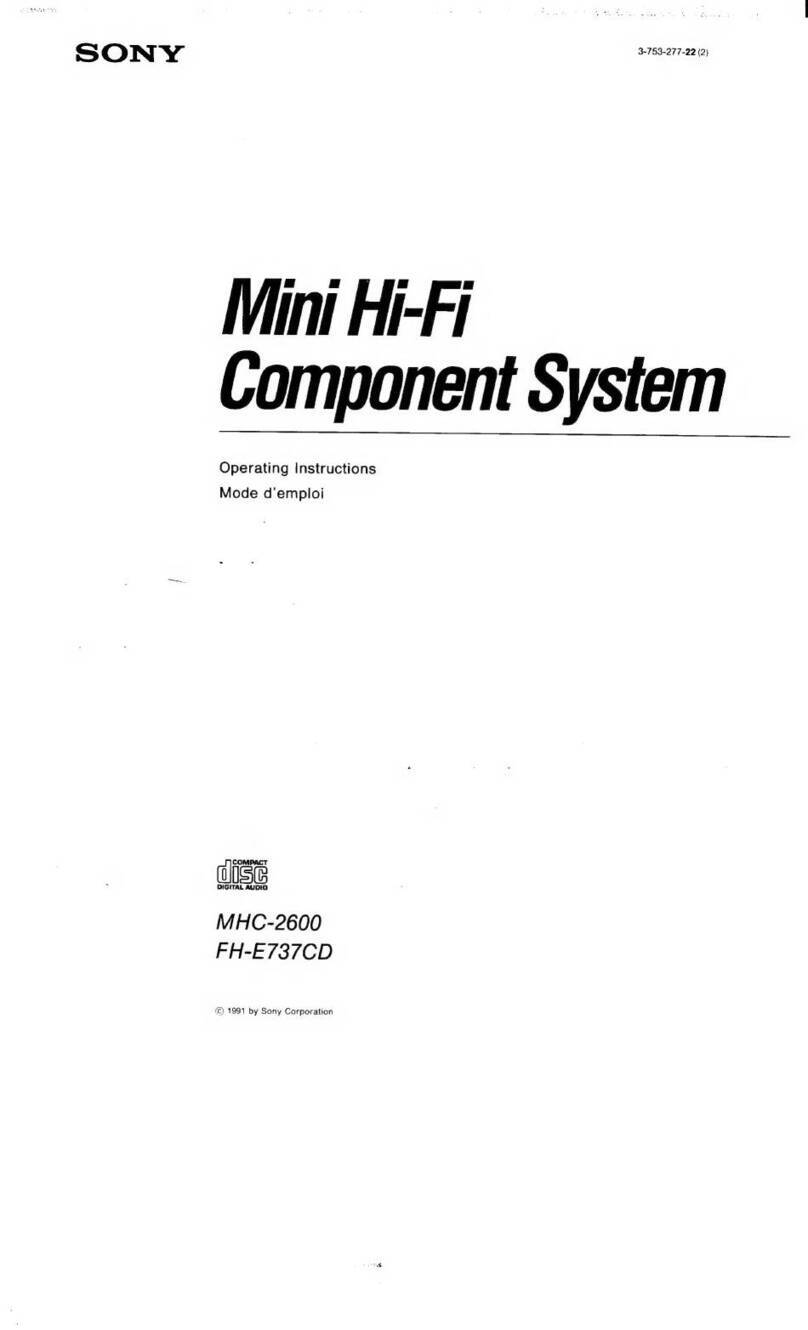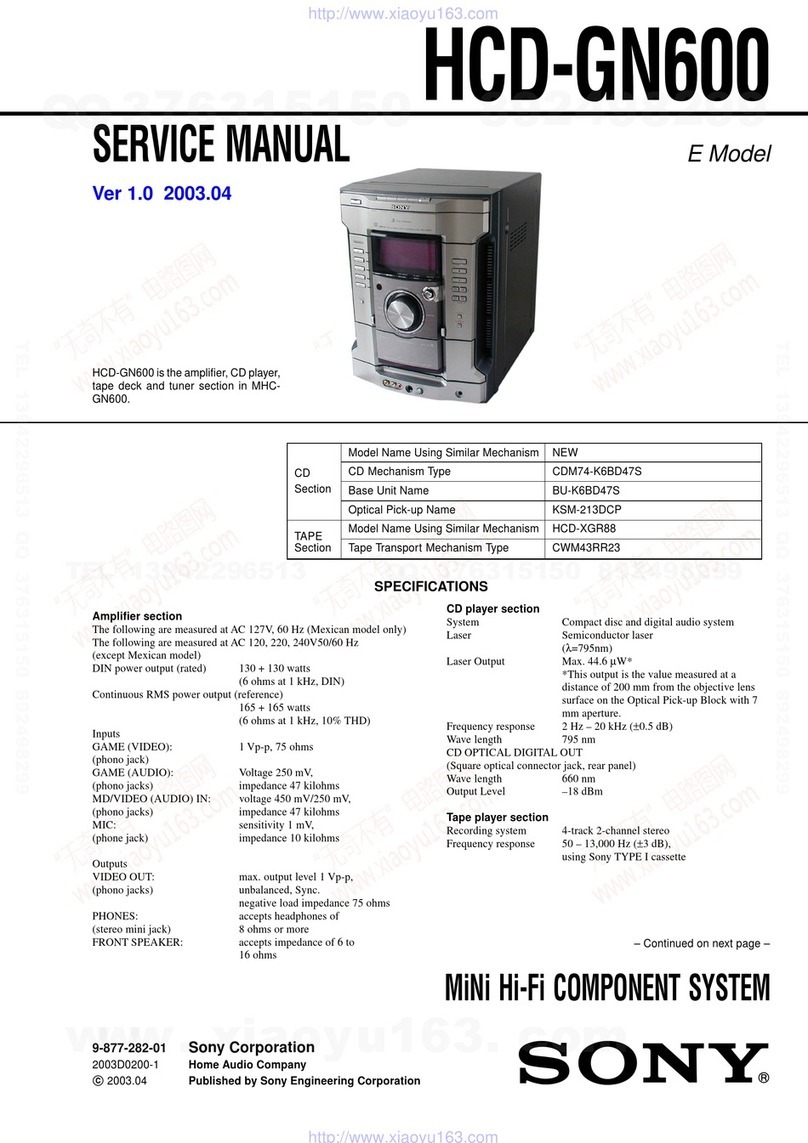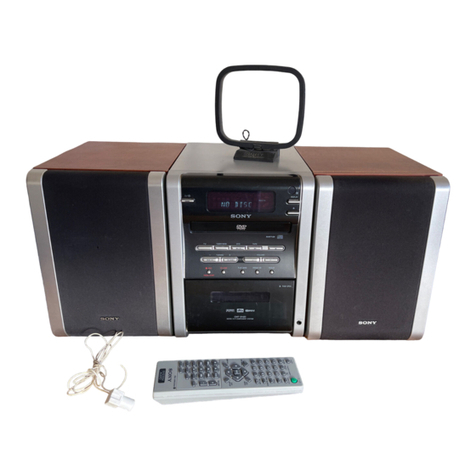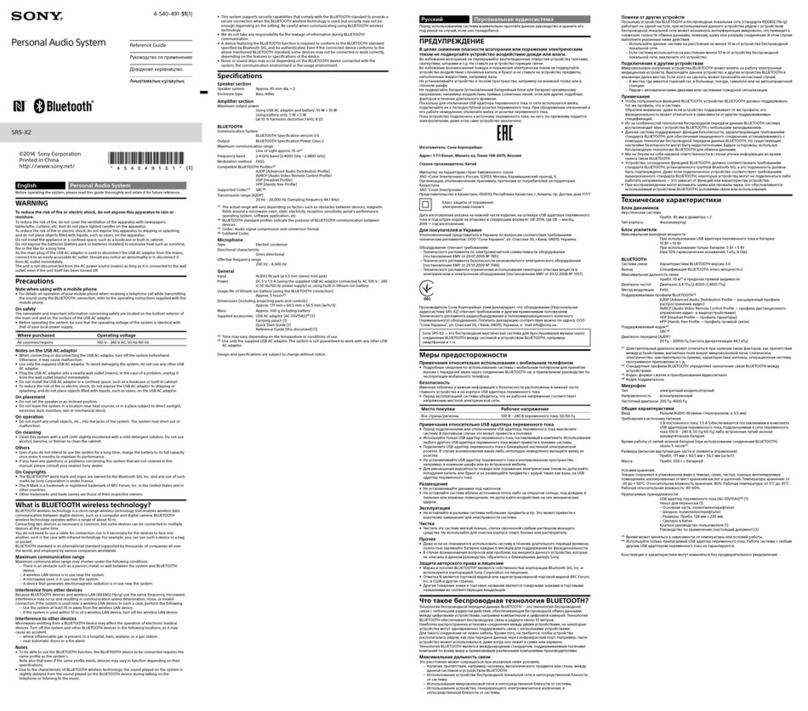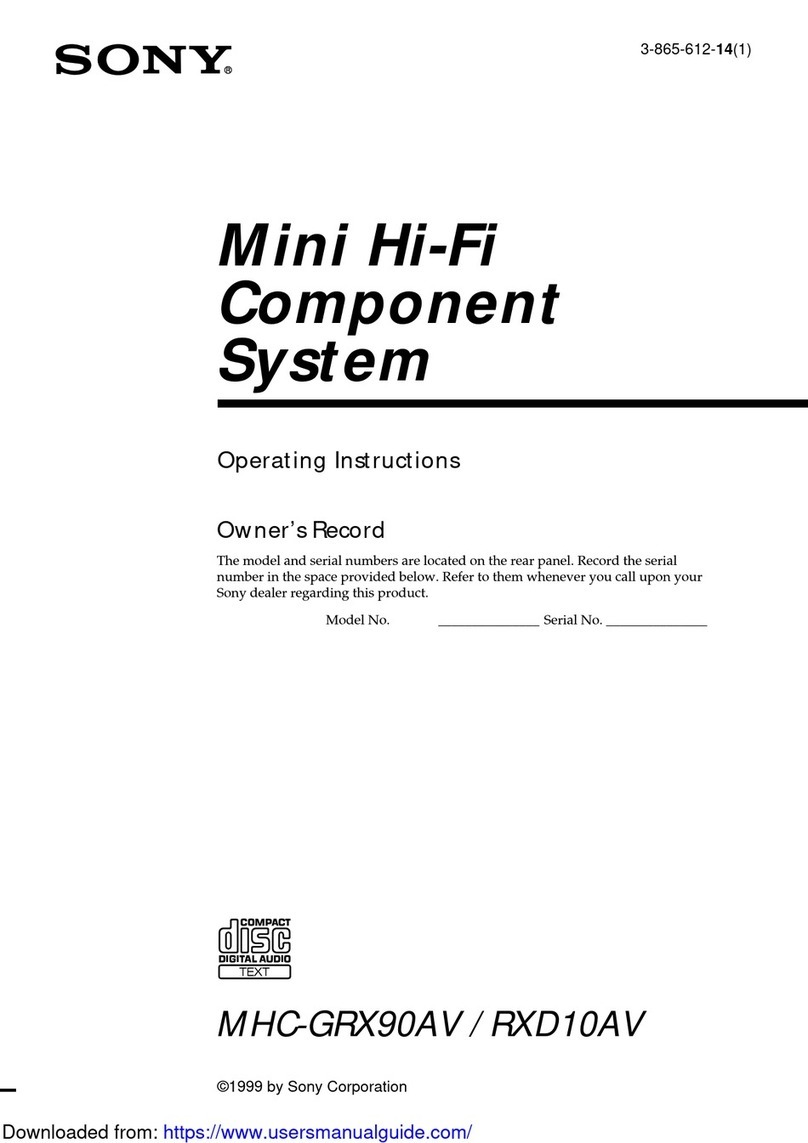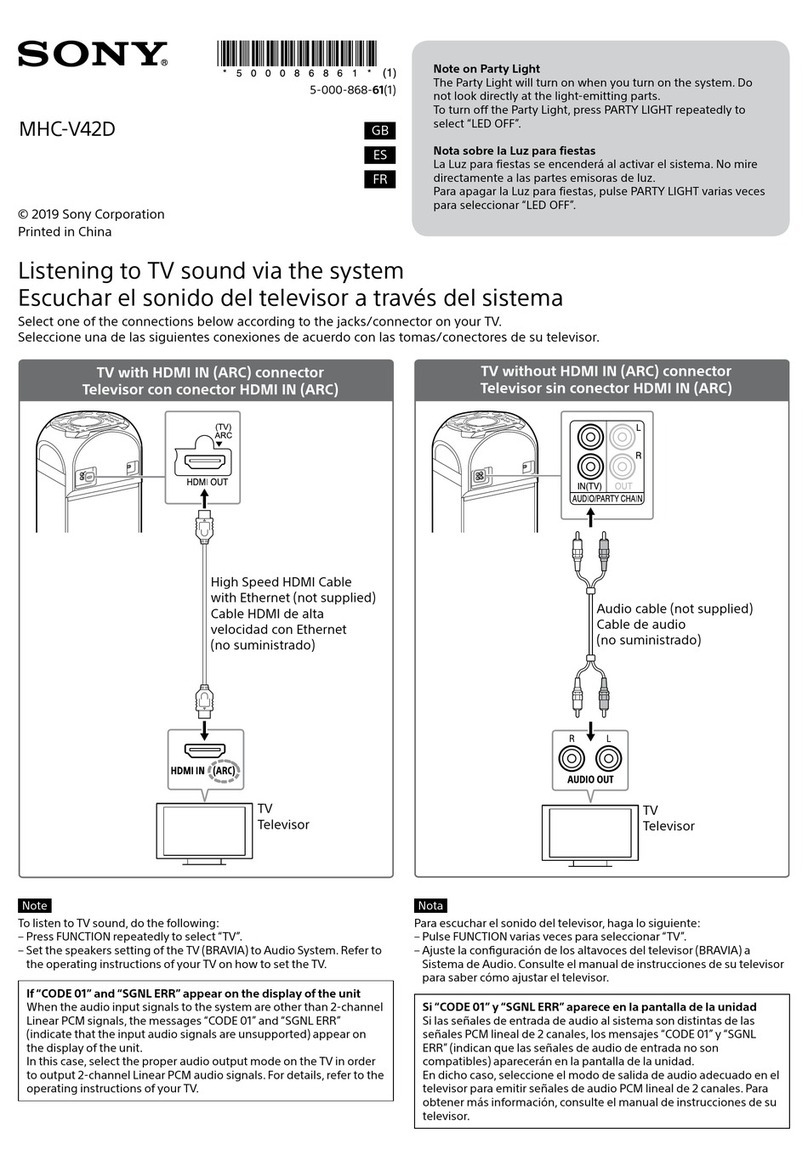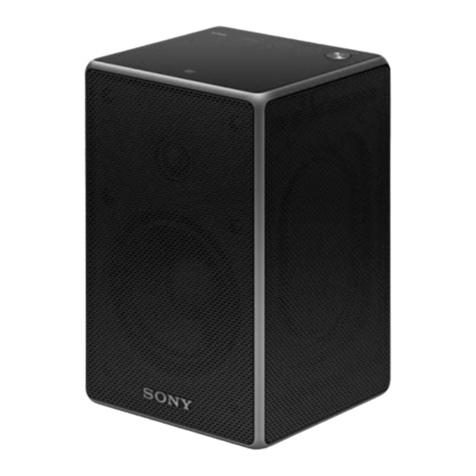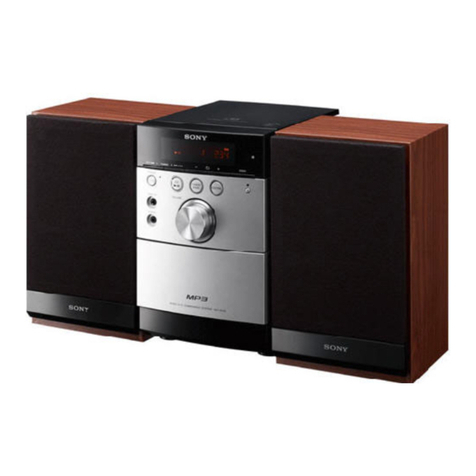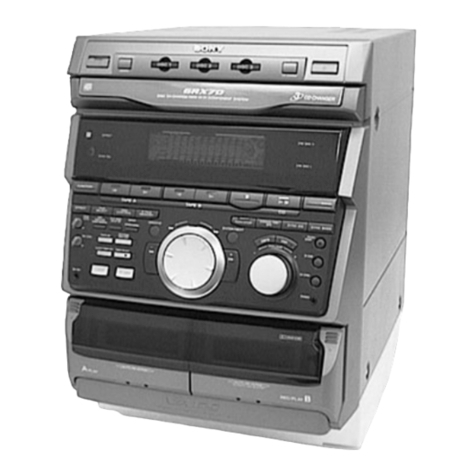– 2 –
NOTES ON HANDLING THE OPTICAL PICK-UP
BLOCK OR BASE UNIT
The laser diode in the optical pick-up block may suffer electro-
static break-down because of the potential difference generated
by the charged electrostatic load, etc. on clothing and the human
body.
During repair, pay attention to electrostatic break-down and also
use the procedure in the printed matter which is included in the
repair parts.
The flexible board is easily damaged and should be handled with
care.
NOTES ON LASER DIODE EMISSION CHECK
The laser beam on this model is concentrated so as to be focused
on the disc reflective surface by the objective lens in the optical
pick-up block. Therefore, when checking the laser diode emis-
sion, observe from more than 30 cm away from the objective lens.
Notes on chip component replacement
•Never reuse a disconnected chip component.
•Notice that the minus side of a tantalum capacitor may be dam-
aged by heat.
Flexible Circuit Board Repairing
•Keep the temperature of the soldering iron around 270 ˚C dur-
ing repairing.
•Do not touch the soldering iron on the same conductor of the
circuit board (within 3 times).
•Be careful not to apply force on the conductor when soldering
or unsoldering.
This appliance is classified as a CLASS 1 LASER product.
The CLASS 1 LASER PRODUCT MARKING is located on
the rear exterior.
Laser component in this product is capable of emitting radiation
exceeding the limit for Class 1.
The following caution label is located inside the unit.
CAUTION
Use of controls or adjustments or performance of
procedures other than those specified herein may
result in hazardous radiation exposure.
TABLE OF CONTENTS
1. SERVICING NOTES
1-1. Power Supply During Servicing ..................................... 4
1-2. Flourescent Indicator Tube/Buttons/
Jog and LEDs Check Mode............................................ 4
1-3. Selection of Input Signal ................................................ 4
1-4. Retry Cause Display Mode at Record ............................ 5
2. GENERAL .................................................................. 7
3. DISASSEMBLY ........................................................ 19
4. TEST MODE
4-1. Precautions for Use of Test Mode .................................. 24
4-2. Setting the Test Mode ..................................................... 24
4-3. Releasing the Test Mode ................................................ 24
4-4. Basic Operations of the Test Mode ................................ 24
4-5. Selecting the Test Mode ................................................. 24
4-6. Operating the Continuous Playback Mode..................... 25
4-7. Operating the Continuous Recording Mode................... 25
4-8. EEP Mode....................................................................... 26
4-9. Functions of Other Buttons ............................................ 26
4-10. Test Mode Displays ........................................................ 26
4-11. Meanings of Other Displays ........................................... 26
5. ELECTRICAL ADJUSTMENTS
5-1. Precautions for Checking Laser Diode Emission ........... 27
5-2. Precautions for Use of Optical Pick-up (KMS-260A) ... 27
5-3. Precautions for Adjustments........................................... 27
5-4. Creating MO Continuously Recorded Disc.................... 27
5-5. Temperature Compensation Offset Adjustment ............. 28
5-6. Laser Power Adjustment................................................. 28
5-7. Traverse (E-F Balance) Adjustment ............................... 29
5-8. Focus Bias Adjustment ................................................... 30
5-9. Error Rate Check ............................................................ 30
5-10. Focus Bias Check ........................................................... 30
5-11. Adjusting Points and Connecting Points ........................ 31
6. DIAGRAMS
6-1. Block Diagram (1/2)....................................................... 33
6-2. Block Diagram (2/2)....................................................... 35
6-3. Printed Wiring Boards
– MD MECHANISM DECK Section – ......................... 38
6-4. Schematic Diagram
– MD MECHANISM DECK Section – ......................... 41
6-5. Schematic Diagram
– MAIN/DISPLAY Section –......................................... 46
6-6. Printed Wiring Boards
– MAIN/DISPLAY Section –......................................... 51
6-7. IC Pin Function Description........................................... 59
7. EXPLODEDVIEWS ................................................ 68
8. ELECTRICAL PARTS LIST ................................. 71
SAFETY-RELATED COMPONENT WARNING!!
COMPONENTS IDENTIFIED BY MARK !OR DOTTED LINE
WITH MARK !ON THE SCHEMATIC DIAGRAMS AND IN
THE PARTS LIST ARE CRITICAL TO SAFE OPERATION.
REPLACE THESE COMPONENTS WITH SONY PARTS WHOSE
PART NUMBERS APPEAR AS SHOWN IN THIS MANUAL
OR IN SUPPLEMENTS PUBLISHED BY SONY.

